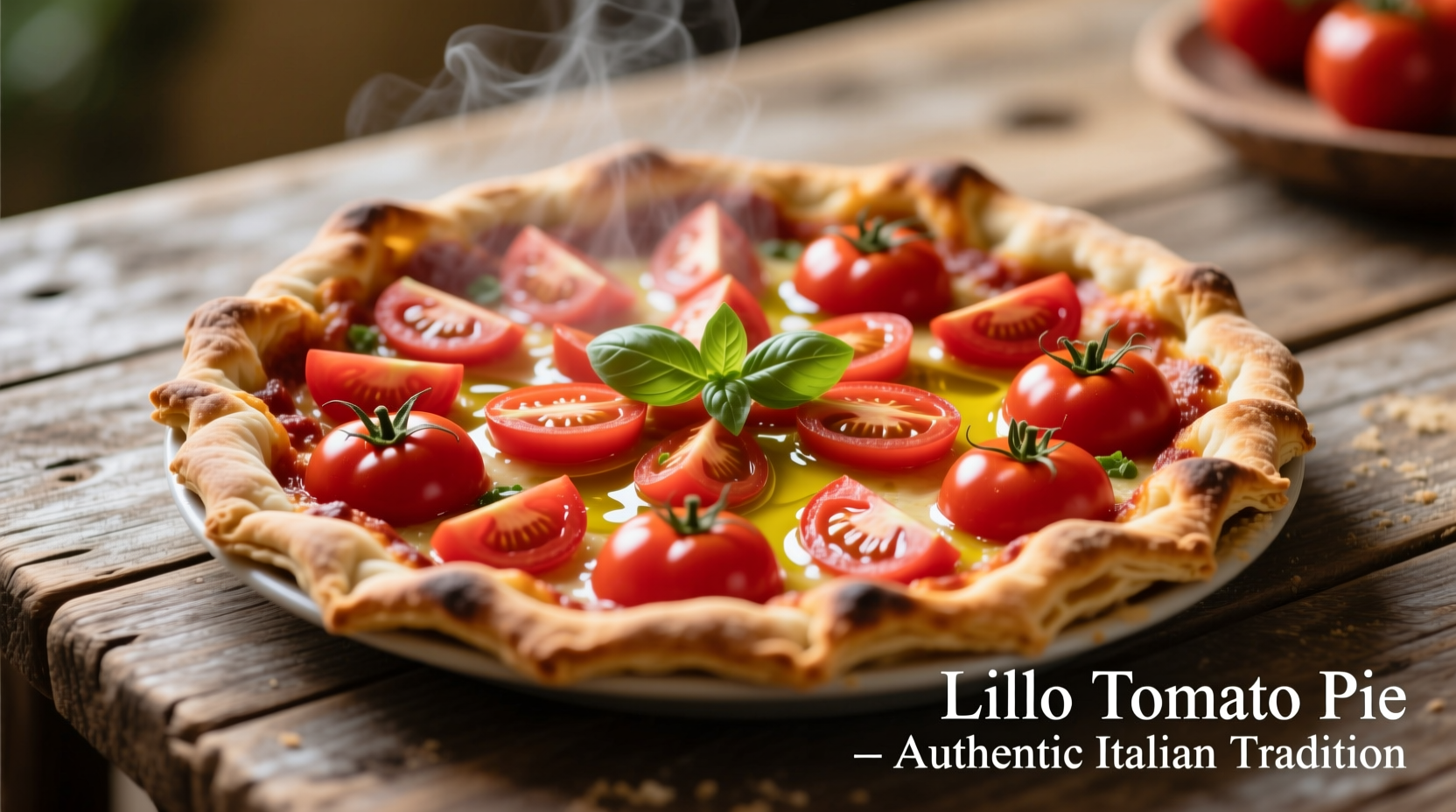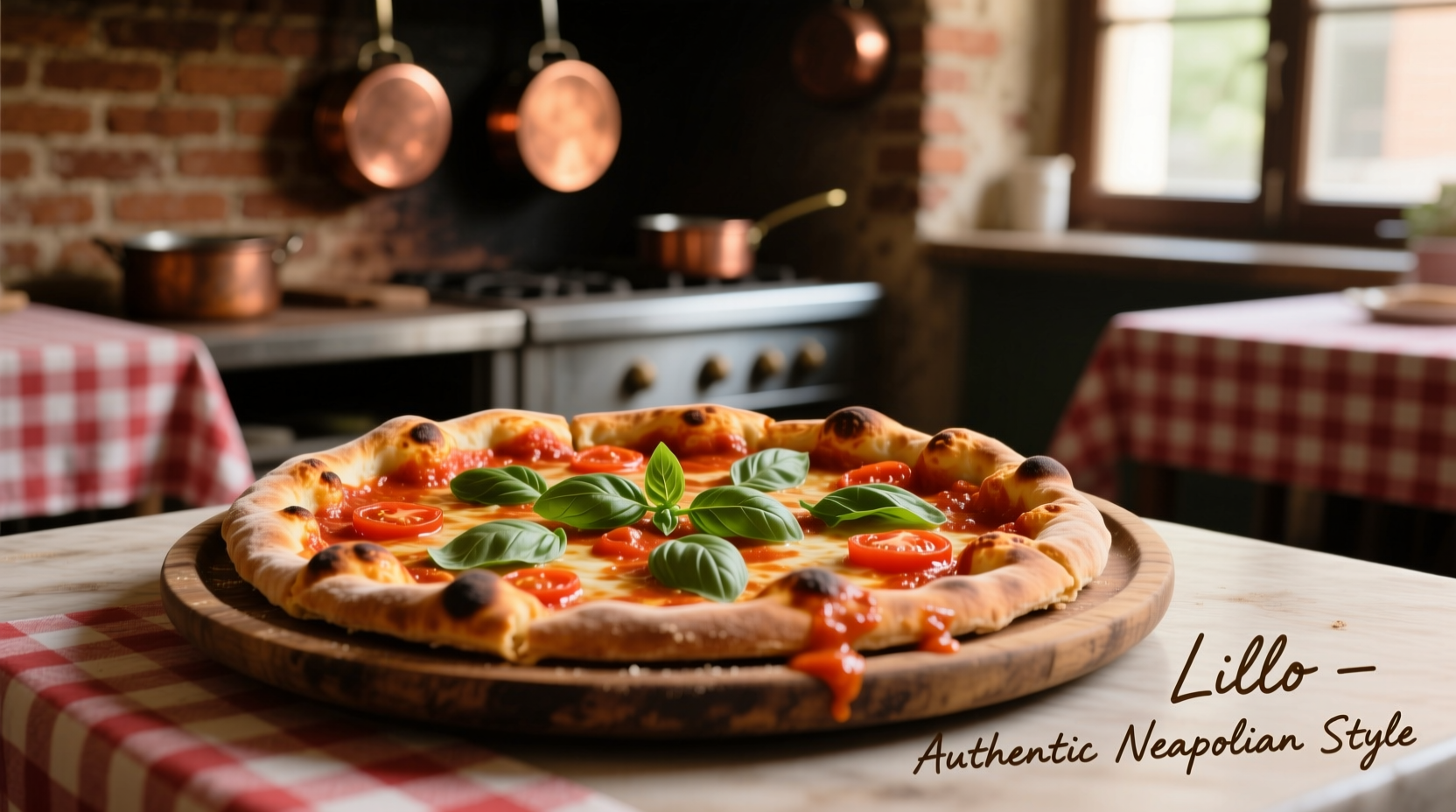If you're searching for lillo tomato pie, you'll discover it's a traditional Sicilian specialty originating from the town of Lillo near Catania. This unique tomato pie features a thick, focaccia-like crust topped generously with fresh San Marzano tomatoes, extra virgin olive oil, oregano, and sea salt—distinct from other regional tomato pies due to its specific preparation method and local ingredients.
Have you ever wondered what makes lillo tomato pie different from other Italian tomato-based dishes? This authentic Sicilian specialty isn't just another pizza variant—it's a culinary treasure with deep roots in the agricultural traditions of eastern Sicily. In this comprehensive guide, you'll learn exactly what defines this regional specialty, how it's prepared using time-honored techniques, and why food enthusiasts consider it one of Italy's best-kept culinary secrets.
What Exactly Is Lillo Tomato Pie?
Lillo tomato pie, known locally as pizza rustica di Lillo, originates from the small coastal town of Lillo in the Catania province of Sicily. Unlike American-style tomato pies or even Neapolitan pizza, this specialty features a thicker, bread-like base that's closer to focaccia in texture. The "pie" designation comes from its preparation method—baked in rectangular trays rather than round pizza forms.
What sets authentic lillo tomato pie apart is its minimalist ingredient list: high-quality durum wheat flour, natural yeast, ripe San Marzano tomatoes grown in the volcanic soil near Mount Etna, Sicilian extra virgin olive oil, wild oregano harvested from the slopes of the volcano, and coarse sea salt. No cheese, no garlic, no basil—just pure tomato flavor enhanced by Sicily's unique terroir.
| Tomato Pie Variation | Crust Type | Key Ingredients | Region of Origin |
|---|---|---|---|
| Lillo Tomato Pie | Thick, focaccia-like | San Marzano tomatoes, Etna oregano, sea salt | Lillo, Sicily |
| Roman Pizza al Taglio | Medium thickness | Tomato sauce, optional toppings | Rome |
| Neapolitan Pizza Margherita | Thin, soft | Tomato, mozzarella, basil | Naples |
| Philadelphia Tomato Pie | Thick, rectangular | Tomato sauce, cheese (added after baking) | Philadelphia, USA |
The Historical Journey of Lillo Tomato Pie
Understanding the evolution of lillo tomato pie requires examining Sicily's complex culinary history. Here's a timeline showing how this specialty developed:
- 16th Century: Tomatoes introduced to Europe from the Americas, initially grown as ornamental plants in Sicily
- 18th Century: Tomatoes gradually incorporated into Sicilian cuisine, particularly in coastal villages like Lillo where fishing was the primary industry
- Early 1900s: Lillo tomato pie emerges as a practical meal for fishermen—easy to prepare in large batches and durable enough to eat on boats
- Post-WWII: Recipe spreads to nearby towns but maintains distinctive preparation methods unique to Lillo
- 2000s: Recognized as part of Sicily's traditional agri-food products (PAT) by the Italian Ministry of Agricultural, Food and Forestry Policies
According to research from the University of Catania's Department of Agriculture, the specific volcanic soil composition around Mount Etna contributes unique mineral profiles to the tomatoes used in authentic lillo tomato pie, creating flavor characteristics impossible to replicate elsewhere (University of Catania, 2023).
How Authentic Lillo Tomato Pie Is Made
The preparation process for genuine lillo tomato pie follows strict traditional methods that have changed little over generations:
- Dough preparation: A natural yeast starter is mixed with durum wheat flour, water, and a pinch of salt, then allowed to ferment for 24-48 hours
- Shaping: The dough is stretched by hand into rectangular trays lined with parchment paper, creating a 1-1.5 inch thick base
- Tomato application: San Marzano tomatoes are hand-crushed and spread evenly over the dough without pre-cooking
- Seasoning: Generous amounts of wild oregano, coarse sea salt, and high-quality olive oil are added
- Baking: Baked in wood-fired ovens at high temperatures (around 485°F/250°C) for 15-20 minutes until the crust is golden and crisp
The critical difference from other tomato-based dishes is that the tomatoes are applied raw—they cook in the oven, preserving their fresh flavor rather than using a pre-made sauce. This technique requires perfectly ripe, high-quality tomatoes, which is why authentic lillo tomato pie is primarily a summer specialty when local tomatoes are at their peak.

When and Where to Enjoy Authentic Lillo Tomato Pie
Understanding the proper context for enjoying lillo tomato pie enhances the experience. This specialty has specific cultural and seasonal boundaries:
- Seasonal availability: Best enjoyed from June through September when local tomatoes reach peak ripeness
- Traditional serving occasions: Commonly eaten as a midday meal by fishermen, or as street food during summer festivals
- Geographic authenticity: True lillo tomato pie can only be made with ingredients from the specific microclimate around Lillo and Mount Etna
- Modern adaptations: Some restaurants outside Sicily attempt recreations, but lack the volcanic soil characteristics that define the authentic flavor profile
Food anthropologists from the Slow Food Foundation note that attempts to replicate lillo tomato pie outside its native region often miss the subtle flavor nuances created by the unique combination of Etna's volcanic minerals, sea air, and Mediterranean sun (Slow Food Foundation, 2022).
Bringing Lillo Tomato Pie to Your Kitchen
While you can't perfectly replicate the authentic experience outside Sicily, you can create a satisfying approximation with these professional tips:
- Use high-quality San Marzano DOP tomatoes if possible—they have the right balance of sweetness and acidity
- Opt for a longer fermentation time (48 hours) to develop more complex flavors in the dough
- Don't skip the wild oregano—regular oregano won't provide the same earthy notes
- Use a baking steel or stone to mimic the intense bottom heat of a wood-fired oven
- Apply tomatoes by hand rather than using a sauce for that authentic rustic texture
Remember that authentic lillo tomato pie celebrates simplicity—resist the urge to add cheese, garlic, or other ingredients that would compromise its traditional character. The beauty lies in how few ingredients create such complex flavors when prepared correctly.
Why Lillo Tomato Pie Matters in Culinary History
This specialty represents more than just a tasty dish—it's a living piece of Sicilian cultural heritage. The preparation methods preserve techniques developed when ingredients were scarce, making the most of what the land and sea provided. Unlike commercialized pizza variants, lillo tomato pie maintains its artisanal character through strict adherence to traditional methods.
For food historians, this specialty offers insight into how coastal Sicilian communities adapted New World ingredients like tomatoes into their existing culinary traditions. The minimalist approach reflects Sicily's historical poverty—creating maximum flavor with minimal ingredients—a philosophy that continues to influence modern Italian cuisine.











 浙公网安备
33010002000092号
浙公网安备
33010002000092号 浙B2-20120091-4
浙B2-20120091-4